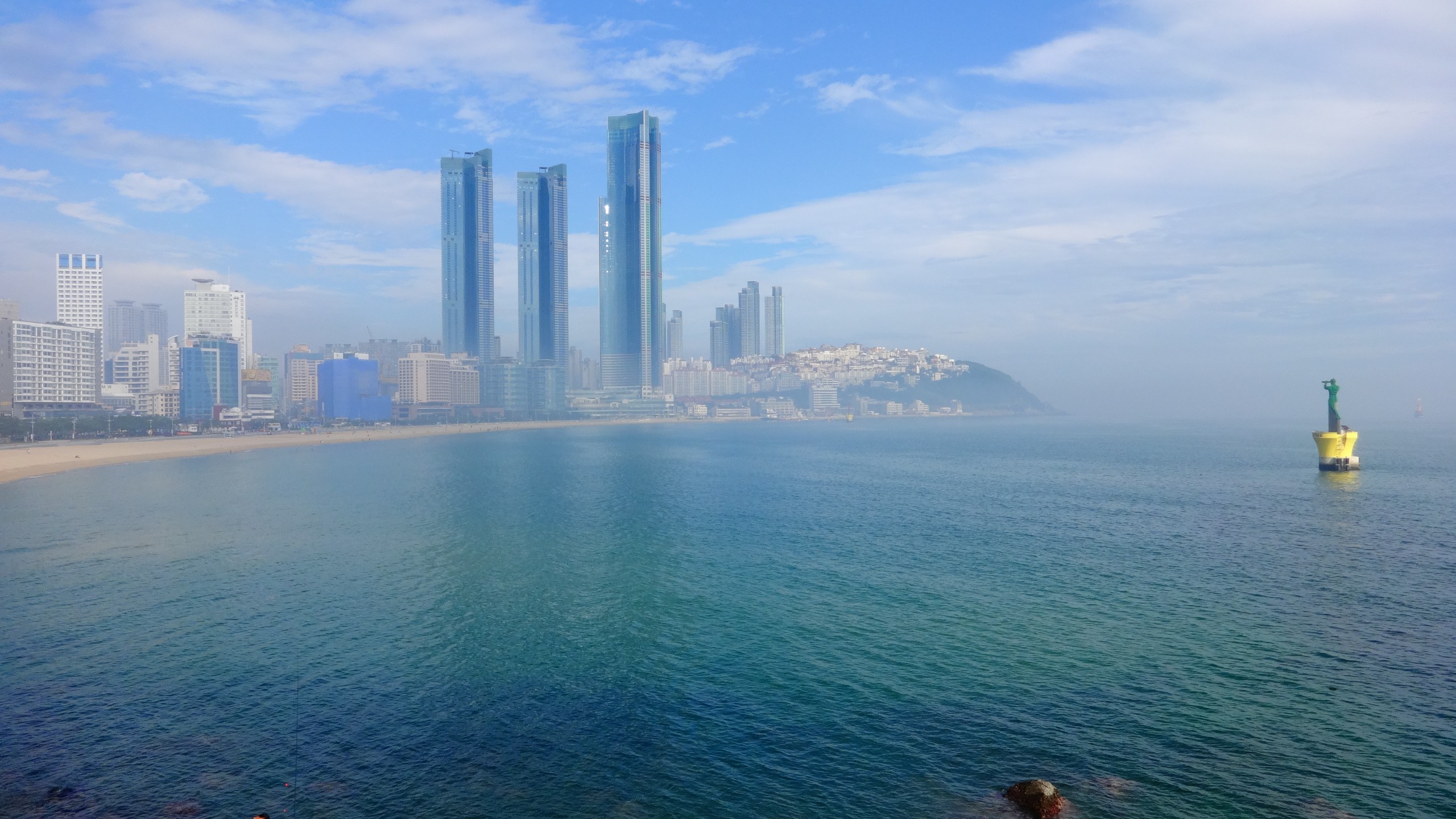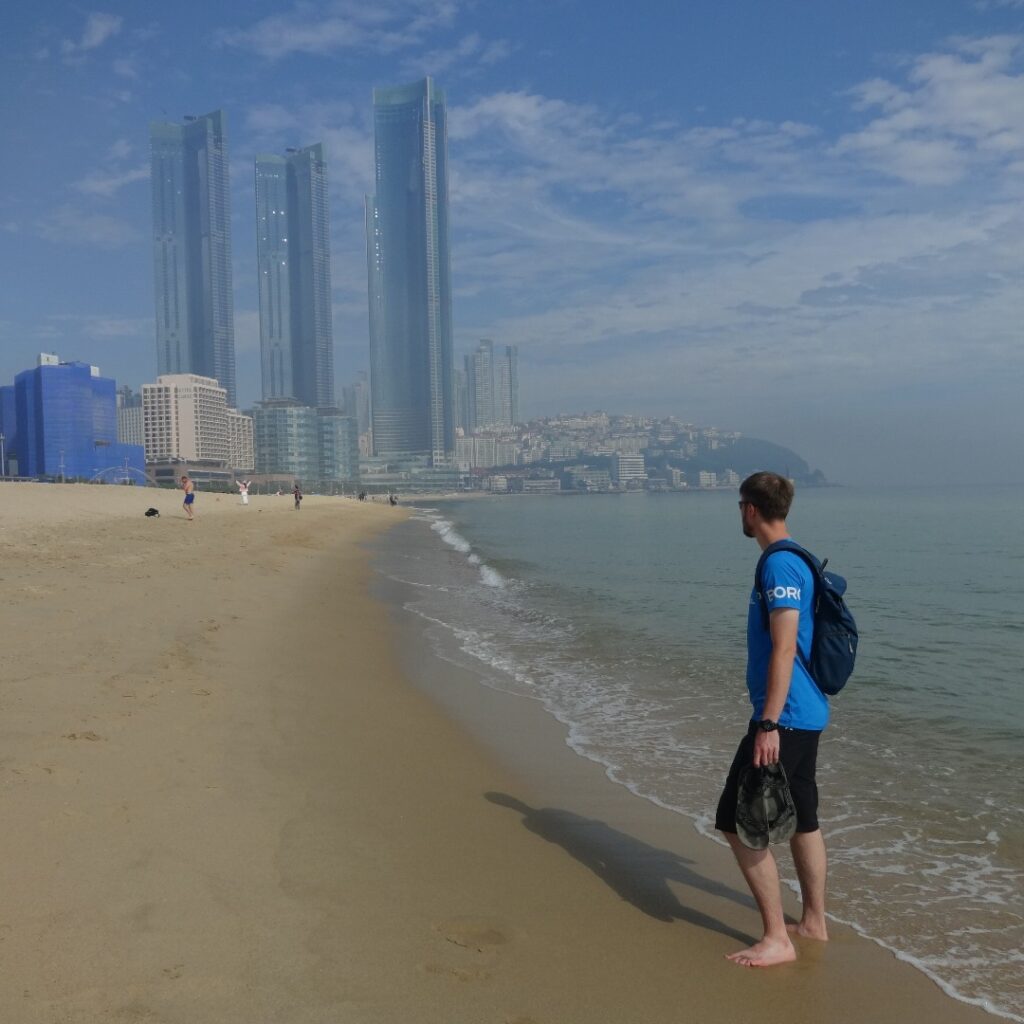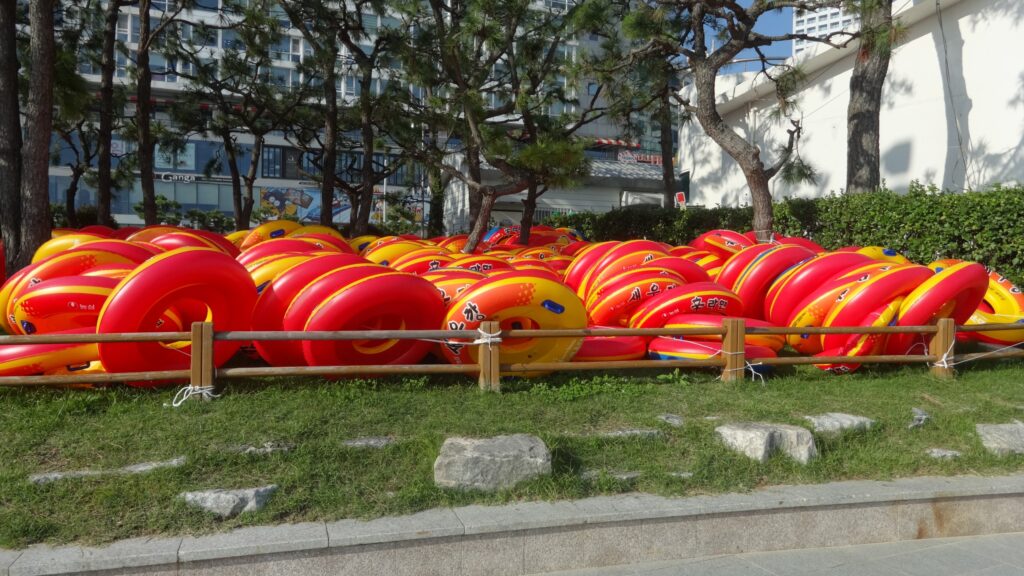
DAY 9
(Reading time: 4 minutes)
Koreans claim that Haedong Yonggungsa Temple is:

So we went to check it out to verify such bold claims.
With all due respect, it didn’t seem the most beautiful to me, but it’s definitely exceptional. While most temples in South Korea are typically located in the mountains or at the foot of hills, this one is built right on the shores of the sea.

In the temple complex, you’ll find gilded seated Buddhas, reclining gilded Buddhas, gilded pigs, mini Buddhas, statues of animals from the Chinese zodiac. However, what they don’t have there, and what annoyed Mark the most, is access to the sea for swimming. I have two arguments for that – Koreans versus swimming + monks and their entirely different concerns. I presume the temple wasn’t built as a leisure center focused on water sports.
The temple was allegedly founded in the 14th century during the reign of the Goryeo dynasty by Master Naong, a Buddhist monk and royal adviser. Buddhism was then going through a period of decline; people suffered from hunger, drought, and had turned away from their gods. Legend has it that Naong was visited by a sea god in the middle of his deepest sleep, who revealed to him the mission to build a temple at the foot of Mount Bongrae. This act and diligent prayers would restore people’s former prosperity. Immediately upon awakening, Naong began a pilgrimage, at the end of which he found the right place by the sea and had Yonggungsa built there.
The story of a dream turned into reality still attracts many people today in the belief that their wishes will come true. Especially if all it takes is to hit the center of one of the bowls under the bridge. Guanyin, the goddess of mercy, overlooks everything, her statue is located higher up on the hill, watching over the temple dedicated to her, and the sea.


In the area, you can find Buddhas of various sizes and purposes. Buddhas for academic achievements, Buddhas guaranteeing the birth of a son, Buddhas of medicine, or even a fat and smiling Buddha of happiness.

They also have golden pigs for good luck!

The temple is extremely popular among locals and tourists alike; there is always a lively atmosphere here, but the busiest month is usually April when cherry blossoms bloom. Buddha’s birth also falls within the period of April (or May, depending on the lunar calendar).
After all the exploration and admiration, one naturally gets hungry, luckily there’s a souvenir and street food alley near the temple. In the picture, you see fried octopus and sikhye, a traditional sweet (overly sweet) rice drink.



From the temple, we took a bus back to the iconic Haeundae Beach in Busan.

The urban beach with white sand stretching about 1.5km is a frequent venue for markets, festivals, concerts, sandcastle modeling competitions, light festivals, sunset watching… but for swimming, again, there’s not much interest, and if so, most would probably need:

Around Haeundae, there’s literally a sea of activities – you can visit an aquarium, nearby street markets, or one of many specialized restaurants, take a ride on a colored mini-train, see the world from above in the observation deck of the LCT The Sharp skyscraper, or perhaps take a coastal walk to the lighthouse and APEC House.

APEC House (Asia-Pacific Economic Cooperation) hosted a summit of 21 representatives of member countries in 2005, but to avoid it looking like it was built only for this purpose, the beautiful glass building is used for occasional conferences or banquets and is freely accessible to visitors for interior tours (in the distance, you can see the Diamond Bridge and Gwangalli Beach, where we were a day earlier).
And what better way to end a challenging day of walking than with Korean barbecue… yes, we had it again because we can!

-endy-
DONKEY’S SPECIAL:
-mj-